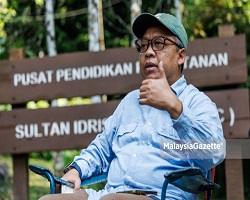The rapid global spread of the coronavirus pandemic at the end of 2019 has revealed numerous pressing environmental, social, and economic challenges. Reforms are essential for countries to recover and build resilience, and the "business as usual" mentality is no longer effective. The urgency with which climate change is occurring in the 21st century has prompted a shift in carbon management priorities toward reducing emissions of carbon dioxide from human activities. Cities should shift away from using fossil fuels and instead adopt cleaner, lower-carbon alternatives. The effects of climate change must be taken into account as communities plan for future recovery measures following the global coronavirus pandemic. Therefore, urban planning must consider the gravity of climate change-related challenges, such as the increased frequency with which extreme weather events occur as a result of factors like global warming.
In a similar vein, more than half of the world's population currently resides in urban regions, with people flocking to cities in quest of the work prospects, services such as health care, and infrastructures including transportation, housing, food, and water. This can be attributed to the high quantities of carbon emissions found in urban areas. This shift, which is now being witnessed, has significantly altered key environmental and meteorological characteristics, having a profound impact on the urban microclimate. Many hazards, such as urban heat islands and flash floods, threaten cities as the global average temperature rises as a result of increased carbon emissions. The widespread elimination of natural ecosystems to make way for man-made structures poses a serious threat to the longevity of urban areas. One of the goals of the United Nations' Sustainable Development Agenda is to increase the number of urban parks, playgrounds, and other green spaces that are available to everyone (Goal 11.7). Urban greenery and greenspaces have long served as the check and balance to maintain the stability of the urban ecosystem. The difficulty of space with cities has led to the exploration of new types of green space, including rooftop gardens and Small Urban Green Spaces.
Since urbanisation and population growth render enormous urban parks impractical, small urban green spaces spaced at regular intervals may be a more efficient way to connect people with nature. Over the years, several names have been given to these little areas, with "Pocket Parks" and "Small Urban Parks" being the most common. These parks act as stepping stones and complement larger parks, thereby addressing the daily demand of people to experience nature. These places can be situated between buildings or atop parking garages or storage sheds, i.e., wherever space is limited. During the global COVID-19 lockdown, when transportation was prohibited, these Small Urban Green Spaces close to residential areas offered urban residents a place to relax and enjoy nature without having to travel far. The concept of Smaller Urban Green Spaces can be traced back to Ebenezer Howard's 18th-century garden city concept, which stipulated that people should not be more than 240 yards away from a park within each dwelling unit, which functions as smaller and more accessible green spaces connected to a larger central park. Singapore, which is known as a garden city, has made efforts to disperse little green spaces around the city, and Copenhagen, where Pocket Parks have evolved as smaller green spaces closer to people, demonstrate the current relevance of this notion.
How might these limited areas contribute to making cities more climate-resilient? These Small Urban Green Spaces contribute to climate resilience through carbon source reduction, carbon emission reduction, and carbon capture improvement. These areas play a role in lowering carbon sources by being planned as an interconnected network. Small parks may seem insignificant on their own, but as part of a broader, interconnected network of green spaces that run along urban corridors, they can have a major influence. Connected Small Urban Green Spaces can aid in reducing fragmented nature of green spaces in cities and improving accessibility to city dwellers, improve ecosystem service, and microclimate at a local level, which will can essential aid in reducing carbon emissions and strengthening uptake through vegetation within these spaces. Meanwhile, intensive management of these spaces may contribute to carbon emissions accounting, which can ensure that efforts to decrease, eliminate, balance, and offset carbon uptake and release are in place. The strengthening of carbon sources is entirely dependent on the planning of vegetation and the creation of an efficient landscape.
Parks have been an integral part of Malaysian society for centuries, particularly in urban and suburban areas. Utilizing a set of guiding principles, the standards-based approach is currently utilised in park planning. The construction of these micro-ecosystems is not a one-size-fits-all endeavour; rather, they should be tailored to the needs of their users and significantly contribute to the goal of increasing the climate resilience of a city. In its efforts to build climate resilience through policies and reforms, Malaysia should consider grassroots initiatives that aim to create sustainable cities and communities through green public spaces, such as these. The planning, design, and management of these small urban green spaces for the greater good of the community and the environment. For instance, the "Laman Tun Perak" Pocket Park in Kuala Lumpur was built using think city's approach to placemaking through green spaces. This was accomplished by incorporating natural elements into the design of man-made structures using the biophilic method. Vegetated micro-environments, which have the potential to serve as the "lungs" of a city, can benefit the biodiversity, eco-system, and quality of life of city residents. Thus, as a long-term strategy to achieve the United Nations' goals for sustainable cities and communities, the incorporation of smaller forms of green space must be incorporated into the planning and construction of more climate-resilient cities.
Tarikh Input: 07/02/2023 | Kemaskini: 07/02/2023 | masridien
PERKONGSIAN MEDIA




























